#Naturalis historia
Text

Double tailed Mermaid in Pliny the Elder, Naturalis historia, German edition, 1565
VS
Carlo Scarpa, Tomba Brion, Cimitero di San Vito, Altivole, Italy, 1974-1978
#Double tailed Mermaid#mermaid#pliny the elder#Naturalis historia#two-tailed mermaid#mythology#myth#carlo scarpa#altivole#architecture#italy#italia#concrete#béton#tomba brion#brion cemetery#cemetery
46 notes
·
View notes
Text
I 2000 anni di Plinio il Vecchio
Uomo dedito allo studio e alla lettura, Plinio il Vecchio era spesso intento a osservare i fenomeni naturali
BACOLI | CITTÀ METROPOLITANA DI NAPOLI – L’Università degli Studi di Napoli Federico II martedì 30 maggio alle ore 10.30 dedica una mattinata allo scrittore latino Gaio Plinio Secondo vissuto nel I secolo d.C. dal titolo Duemila anni dalla nascita di Plinio il Vecchio.
Cornice…

View On WordPress
#Bacoli#F2Cultura#Naturalis Historia#Plinio il Vecchio#Università degli Studi di Napoli Federico II#Villa Ferretti
1 note
·
View note
Text
“[Fumitory] was already called fūmus terrae (smoke of the earth) in the early 13th century, and two thousand years ago, Dioscorides wrote in De Materia Medica (Περὶ ὕλης ἰατρικῆς) and Pliny the Elder in Naturalis Historia that rubbing the eyes with the sap or latex of the plant causes tears, like acrid smoke (fūmus) does to the eyes.”
Old school conjunctivitis treatment apparently. Like trying to treat pink eye with pepper spray.
0 notes
Text



So in writing the history of identification/taxonomy chapter for The Everyday Naturalist, I spent a lot of time poring over scans and reprints of very old western European natural history books. This included a lot of medieval bestiaries, which were usually illuminated manuscripts with the colorful, stylized artwork so common from that era. It wasn't until the European Renaissance that you started seeing more of an emphasis on realistic artwork, and by the time you get to the transitional period between the late Renaissance and the Enlightenment engravings based on original drawings were very common for illustrating books on animals and plants.
A lot of the images passed around as "antique scientific illustrations" stem from the mid-17th century Historiae Naturalis written by John Jonston and illustrated by Matthäus Merian the Elder. By this point in history numerous European nations were sending ships around the globe to bring back resources, which included a significant number of natural history specimens. The sheer variety and biodiversity represented by these gave naturalists in these countries an overwhelming amount of fodder for study, classification, and publication.
However, there was still the perennial problem that not everyone writing or illustrating these seemingly exotic species could access them in person. Medieval bestiaries, and their predecessor the Physiologus, tended to mix natural history with religious allegory, and often the writers had never actually seen the species they were describing. Since they had to go on secondhand (or thirdhand, or fifteenthhand) information, things sometimes got lost in translation like a big game of Telephone. And the situation was still the same by the time Jonston and Merian were working on the Historiae Naturalis.
Which is why that venerable attempt to catalog as many of the animals in the known world as possible includes, amid pages of real animals like molluscs, deer, and bats (categorized with the birds!), you also had descriptions and engravings of six different unicorn species. Jonston did remark that he was going entirely on the word of others and cited his sources wherever he could, but it seems as though most of them were treating the unicorn as a separate beast from the rhinoceros or antelopes. (You can find a scan of the entire Historiae Naturalis de Quadrupedibus here, if you want to read for yourself.)
This is probably the last major natural history work in which unicorns and other mythical animals would be presented as equally real as flesh-and-blood animals; once the Enlightenment got into full swing, the sciences sought empirical evidence, and hearsay was generally no longer considered good enough for publication. So there's something a little charming about this text that bridges the gap between the ancient bestiaries with their blurring of fact and fiction, and the modern emphasis on chasing down the truth behind the myths.
#natural history#Historiae Naturalis#scientific illustration#antique illustration#vintage illustration#bestiaries#science#unicorns#animals#wildlife#nature#Renaissance#medieval art#medieval history#bestiary#history#art history#antique animals
77 notes
·
View notes
Text
Title: トキアケヌユメ (An Unexplainable Dream)
Arrangement: tomoya
Vocals: みぃ
Album: 劇場版秘封俱楽部 星降る夜のユートピア
Circle: TUMENECO
Original: The Childlike Duo's Naturalis Historia
#touhou#maribel hearn#renko usami#dr. latency's freak report#The childlike duo's naturalis historia#TUMENECO#劇場版秘封俱楽部 星降る夜のユートピア#みぃ#tomoya
13 notes
·
View notes
Photo
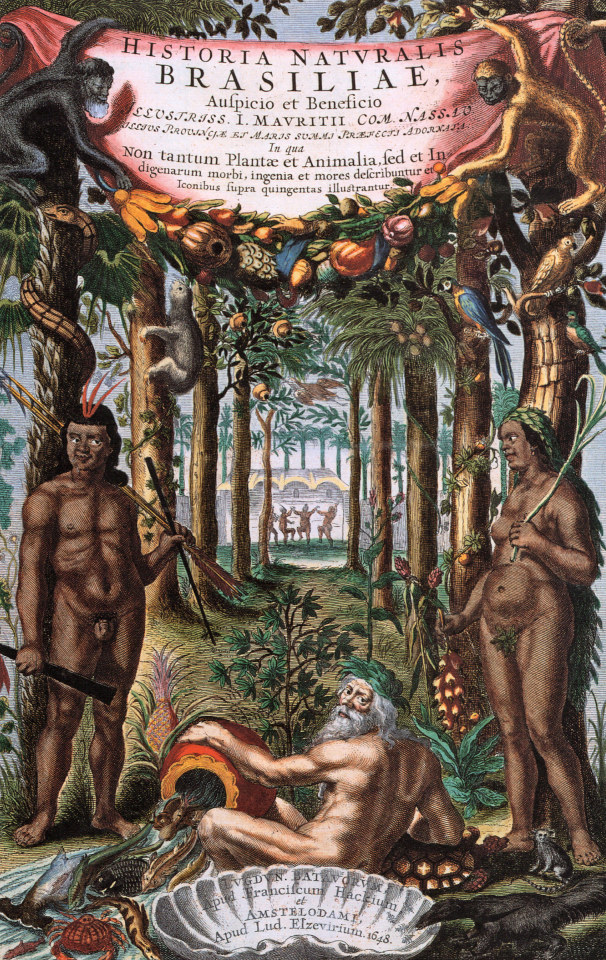
capa da primeira edição de historia naturalis brasiliae, publicada em 1648, de autoria do médico e naturalista holandês guilherme piso.
10 notes
·
View notes
Text
villa of livia's garden room fresco, from palazzo massimo

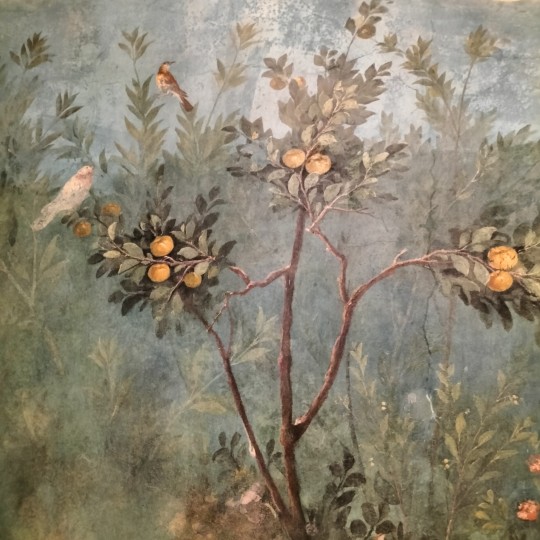
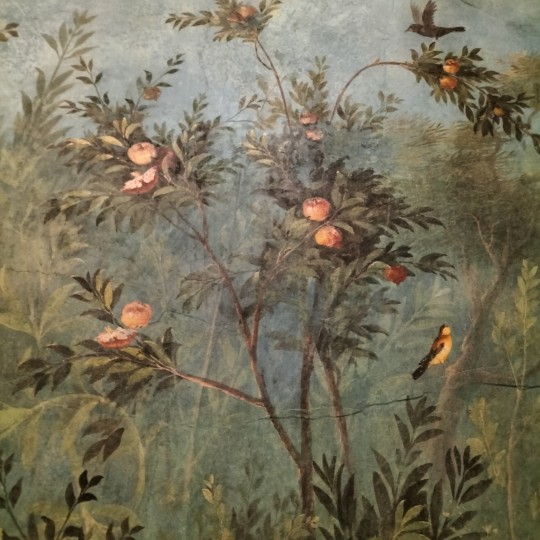


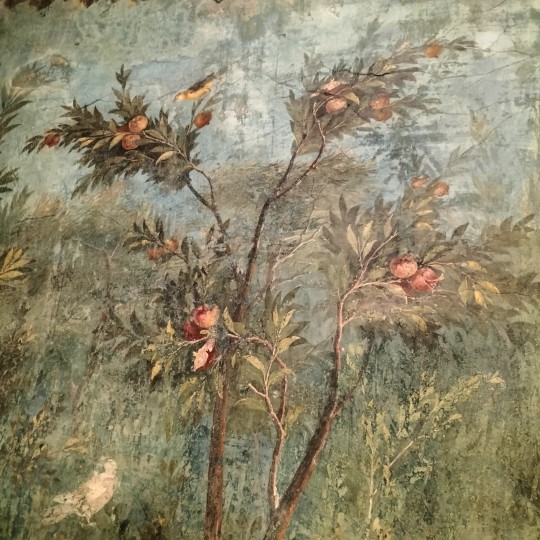
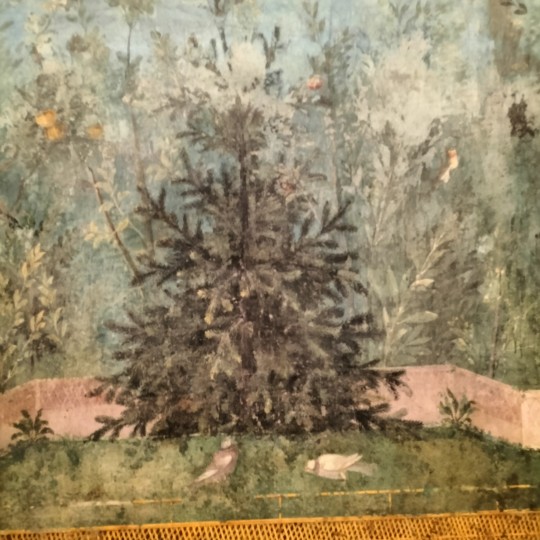

known as ad gallinas albas (of the white hen) because of pliny the elder's tale in his naturalis historia, recounting the myth of livia, newly bethroted to octavian augustus, having a white hen holding a laurel branch in its beak dropped into her lap by an eagle, interpreted as an omen of good fortune.
full view on tiktok
#archaeoblr#archaeology#roman archaeology#roman art#ancient rome#roman history#roman fresco#ancient art#villa of livia#villa di livia#octavian augustus#rome#roma#palazzo massimo#museum#roman museum#paiawon.txt#art history#historyblr#artblr#when in rome#studyblr#tagamemnon
826 notes
·
View notes
Text
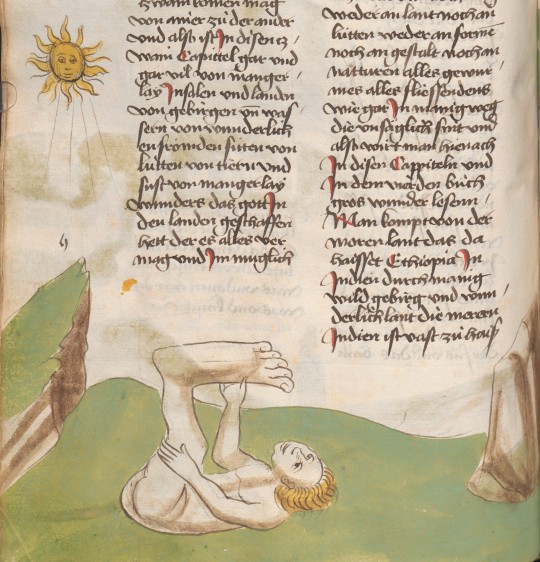

sun shining on a sciapod
in a german translation of "mandeville's travels", illuminated manuscript, bavaria/swabia, ca. 1476
source: Vienna, ÖNB, Cod. 2838, fol. 86v
"He [Ctesias] speaks also of another race of men, who are known as Monocoli, who have only one leg, but are able to leap with surprising agility. The same people are also called Sciapodae, because they are in the habit of lying on their backs, during the time of the extreme heat, and protect themselves from the sun by the shade of their feet."
Pliny the Elder on sciapods in Historia Naturalis, VII: 2, ca. 77 AD (engl. translation by Bostock/Riley)
#medieval art#illuminated manuscript#15th century#sciapods#sciapodes#monopods#mandeville's travels#feet#nudity#sun#pliny the elder
449 notes
·
View notes
Photo

🦄 Historiae naturalis de quadrupedibus libri: . Amstelodami: Apud Ioannem Iacobi Fil. Schipper, MDCLVII [1657].
74 notes
·
View notes
Note
gio what are your thoughts on the story of cimon and pero/roman caritas. devoid of (incestuous) eroticism bc breasts were and are not inherently sexual or rife with voyeurism on something transgressive for the sake of filial piety. also apparently some versions have it be a mother and daughter so make of that what you will
very very interesting question!! i had to look up the sources because i wasn't super familiar with the story in the first place, and for the sake of ease and context i have translated the two sources i referenced and added them here. (exceedingly long answer under the cut, after some figurative depictions and the sources themselves)
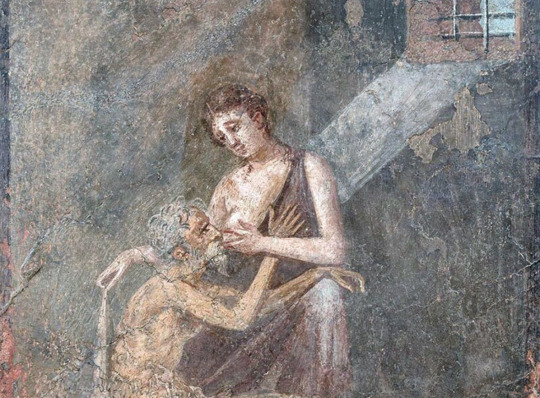
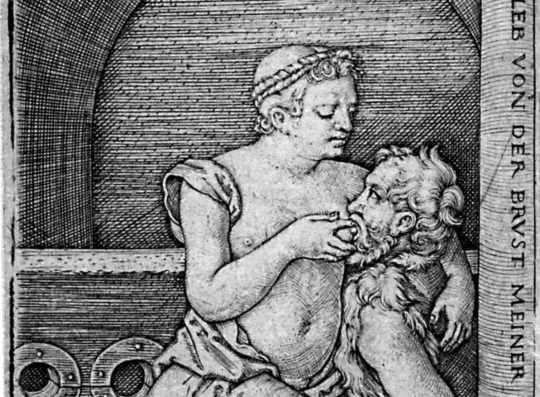
Valerius Maximus, Memorabilia 5.4.1:
Such fame of filial piety is said to be held by Pero, who nursed as though an infant her father Mycon, very old in age, having come into the near-identical condition of imprisonment she was in. The human eye marvels and astonishes upon seeing the paintings depicting this story, which perpetually renews the extraordinary nature of such an ancient event through the admiration for the scene being portrayed.
Pliny the Elder, Naturalis Historia 7.55:
Undoubtedly endless examples of filial piety exist worldwide, but in Rome there is one alone to which none other can compare. A humble woman on the verge of giving birth, a plebeian and thus unnamed, had been allowed to visit her mother who was in prison because of a crime she had committed; despite being under constant surveillance so that she may not sneak in food for her, the woman was caught feeding her mother from her own breast. For such a marvelous display of piety was the mother freed, and both were granted food in perpetuity, and that very place was consecrated to the goddess of Pietas.


i think this is a very interesting story, i can see why it is such a common theme to be depicted throughout art history, and i definitely empathize with and share the reaction valerius maximus describes in the viewer of such artistic depictions: the visual effect of a woman breastfeeding an adult, one significantly older than the woman herself, is no doubt incredibly striking, and it is only compounded by the knowledge that said adult is the breastfeeder's own parent.
there is something extremely visceral about this mental image that makes me want to flinch and look away from it, like i am seeing something i am not supposed to be seeing: this is something different from the reaction that a mother breastfeeding her child usually evokes in me, and far more similar to the reaction i have to seeing a couple have sex in public. of course, a lot of this is my own personal and cultural bias speaking: while breasts are not ontologically sexual, they have a sexual connotation in our society, and an adult sucking on another adult's breasts, even with milk flowing, is an act that instinctively reads as sexual and thus incestuous to a modern-day observer, even one who knows there is no sexual intent behind the act.
there is also an element of subversion, and thus further taboo, enshrined in the act: it's more self-evident in the story about the plebeian mother and daughter, but no less present in the one of pero and mycon. a mother breastfeeds her daughter, who in turn grows to have children of her own and breastfeed them, and this goes doubly so for a plebeian woman who would not have had the means to take on a wetnurse: that a daughter breastfeed her own mother shatters the hierarchical dynamic that tacitly establishes itself the moment the newborn daughter latches onto the mother's breast, and it places the daughter herself in a position of power as the one who now controls the mother's access to food and life, as well as forcing the mother into a regression of age where she now has to step into a child's shoes and trust her daughter with her life and her nourishment.
i would argue the same goes for the father, with the obvious caveat that roman fathers usually did not breastfeed their children and so that one immediate parallel doesn't hold up; however, it is still a very clear subversion, especially when you take into account that the roman father as head of the family would have very concrete power of life and death over his children, while he is here fundamentally subject to the whim of the daughter who holds the power of life and death over him in the form of breastmilk. of course, in both cases, the daughter is magnanimous and pious and of her own volition she offers her breast to her parent for feeding, potentially even robbing her soon-to-be-born or newly-born child of the milk that is rightfully theirs: after all, these are both being used as exempla of filial piety and are surrounded by other such exempla, and selfless devotion to the ailing parent even beyond the realm of what is usually considered proper is a storied roman value. in this sense, one can read these tales as the child giving back to the parent, and therein can lie the subversion: as the parent once fed them and gave them life (or even straight up breastfed them in the case of the mother) in a time of the child's helplessness, so too the daughter in a time of the parent's need must take it upon herself to give back and feed her parent with the body she was given by them.
of course, this is just pure speculation on my part, and while i do think it's likely that an ancient roman reader or viewer might interpret the story somewhat similarly to the last paragraph, i cannot be sure: i don't know how breasts were viewed in the roman world, but i can make an educated guess, judging by how even in most nude or scantily clad depictions of roman women their breasts are bound and they are only shown as unbound in erotic illustrations. it is very possible that the ancient romans saw breasts in a somewhat similar way as us, which is to say quite eroticized beyond the context of breastfeeding; i wonder especially if a father would have had the opportunity to see his daughter's breasts organically, if such an instance was normal or possible or if she would have kept them bound in such a situation.
all this rambling to say that breasts were likely eroticized to some degree in roman culture, and to me it's very telling that some narrations report the guards/witnesses of such breastfeeding as being shocked or finding it indecent before understanding it as an act of filial piety: the sheer fact that it needs to be prefaced with this disclaimer of sorts, of it being a story of filial piety, implies that the image of an adult man sucking on a woman's breasts may have had other, sexual connotations (an adult woman doing the same might even have connotations of lesbianism, how ghastly), and so the tale both plays into that ambiguity and tries to dispel it by explaining the context.
i hope this makes even a lick of sense! i had a lot of fun exploring this story and mulling it over in my head, thank you for giving me the opportunity to do so, i really hope you found my answer the least bit satisfactory <3
118 notes
·
View notes
Text
DAVID ATTENBOROUGH is PLINY THE ELDER in NATURALIS HISTORIA (2024)
95 notes
·
View notes
Text
Titus Flavius and his indelible traces.
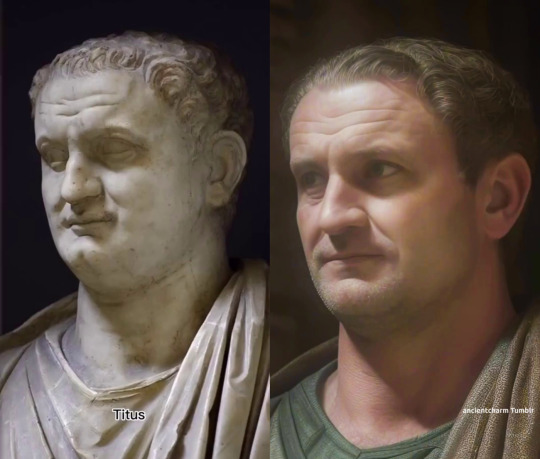

Titus Flavius was born in Rome on December 30 of the year 39. He was a direct descendant of a loyal soldier of Pompey the Great during the Civil War against Julius Caesar. After Pompey's defeat at the Battle of Pharsalia, his life was spared by Julius Caesar, returned to home and became a Publicanus (tax collector). In an incredible twist of fate, the Flavians, a family of peasants, who came from the defeat of the past, ended up occupying the throne founded by Caesar's heir, and replacing the aristocratic Julio-Claudian dynasty with the Flavian dynasty.
During reing of Caligula (37-41) Vespasian,father of Titus, was Aedile of Rome. According Suetonius, Emperor Caligula passed by a street that was very dirty, ordered Vespasian to be brought and the garbage thrown on him, and then told him "Do your job well, keep the city clean."
During the reign of Claudius (41-54) Vespasian obtained the position of praetor and the command of one of the legions that went to the conquest of Britannia.
After revolt in Judea in the year 66, emperor Nero chose the experienced and brilliant general Vespasian to put an end to the rebellion. Vespasian went with his son, Titus, who was then 26 years old, and was an excellent army's officer.
Nero, the last of the Julio-Claudian dynasty, committed suicide in 68, which generated a civil war. On December of the chaotic year 69, known as the year of the 4 emperors, in which three aristocrats came to the throne and were murdered, Vespasian was proclaimed emperor by the army. Titus was left in command against the rebellion in Judea.
A historical event of mystical relevance.
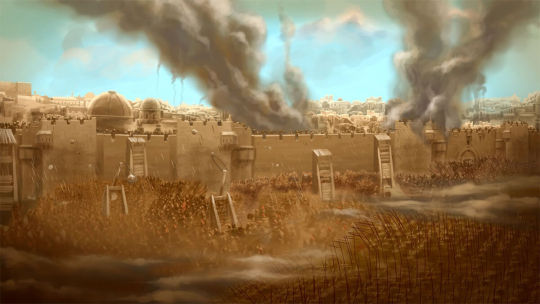
After months of bloody fighting, on August of the year 70, the Temple of Jerusalem was looted, burned and demolished by Titus's troops.
Titus made his triumphal parade in the year 71 in Rome. Years later, in the place where Titus passed, his younger brother, the Emperor Domitian, ordered the construction of the Arch of Titus; One of its extraordinary relief depicts the triumphal parade with the treasures of the Temple.

Emperor Vespasian decided to tear down the Domus Aurea, the palace that Nero had ordered to be built for his own enjoyment, and build "a palace for the enjoyment of the people". He saw his work almost completed but died of illness on June 23, 79, at his estate. The next day Titus ascends the throne.
A mess with the gods.
Exactly 4 months after his accession to the throne and while his younger brother was celebrating his birthday, a tragic event occurred. An inexplicable and terrifying news reached Rome: the peaceful mount Vesuvius roared, exploded and became something unknown, and several Roman cities with their inhabitants disappeared under "a sea of fire." Among the victims was the prestigious politician, soldier and writer Pliny the Elder, a close friend of the imperial family, who had dedicated the book 'Naturalis historia' to Titus.

Emperor immediately went to the scene of the disaster. He made immense works and donations to help those affected in the area. Early year 80 he went there for the second time and at that time a fire broke out in Rome for three days. Rumors began to circulate that the emperor had a "problem with the gods", and it was due to his forbidden relationship with princess Berenice, great-great-granddaughter of Herod the Great.
Although he was a very popular emperor, he did not want to risk those tragedies affecting his image and the people becoming angry, so he decided in 80 to accelerate his father's work, which still had to wait to be completed. And so began the inauguration of the most famous "stadium" in history : The Flavian amphitheater, better known as Colosseum.
There were 100 days of games. Those shows were free for the people. They had never seen an amphitheater of such grandeur. Very soon the people of Rome forgot about Vesuvius and Berenice.

Coins were minted showing the work started by his father but completed and inaugurated by him. In the image: a sesterce from the time of Emperor Titus.

The pseudo-Nero
After Nero's death, rumors began to circulate that his suicide had been faked to escape being emperor and go live in the East to do what he really wanted: sing, play the lyre and perform in theaters. Years later, this rumor had spread throughout the empire and even beyond its borders.
Suetonius wrote about an event that he experienced during the reign of Domitian: " Twenty years after his death, during my adolescence, a man who boasted of being Nero having appeared. He found such a favorable reception among the Parthians that energetically supported and was handed over to us with difficulty."
The Parthians were happy to believe that these men were the real Nero because he had been the only emperor they liked, as during his reign he had a peaceful and cordial attitude towards Parthia.
Titus had to face the rebellion of a guy called Terentius, a Pseudo-Nero that according to ancient historical sources "he sang with a voice equal to that of Nero, played the lyre and looked like him." The impostor had a lot of followers in the eastern Roman provinces. The Parthian king, Titus's enemy, received this man and made preparations for him to return to Rome as emperor but he was executed when his true identity was revealed.

On September 13, 81, Titus died at the age of 41 on his father's farm, due to fever. His brief reign was very prosperous and popular.
Having only a daughter (Julia Flavia), his successor was his brother Domitian who would rule for 15 years.
According to Roman writers, his last words were: "I regret nothing except one thing"; And some believe that he regretted having said "no" to Berenice when she proposed marriage after the death of emperor Vespasian, the major opponent of the relationship between them.
The Colosseum and the Wailing Wall are undoubtedly the two indelible traces of Titus Flavius.
145 notes
·
View notes
Text
Throwback Thursday: Who named ammonites?
When it comes to ammonites, most folks think of the Jurassic Coast and Mary Anning.


But did you know that she was not the first to find or even name them? The first mention of ammonites was actually around 77 AD in the Naturalis Historia, the world's first encyclopedia, written by ancient Roman naturalist, Pliny the Elder.
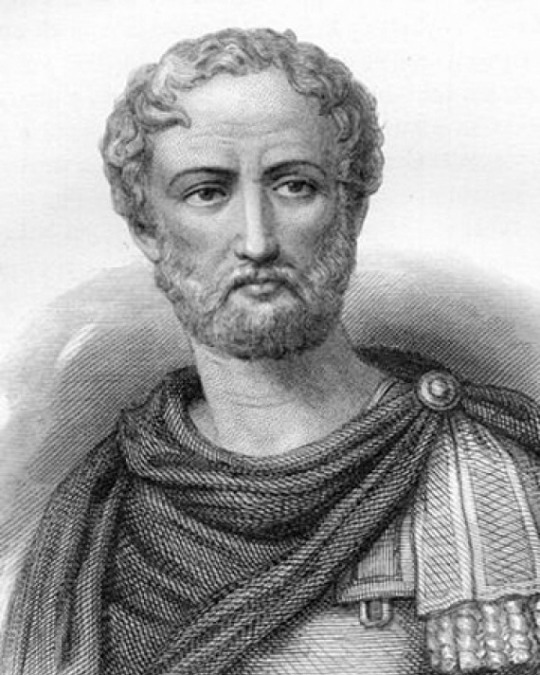
He spent about a decade or more writing the 37 book series. It covered everything from botany,

zoology,

astronomy,

geology,

and mineralogy.

Unfortunately, he didn't get to finish (even after 37 books) due to his untimely death due to a certain volcano that blew in 79 AD.

However, he did get to name ammonites, which means "horns of Ammon" after the Egyptian God Amun, who was often depicted with rams horns.
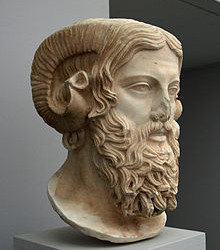
#paleontology#trivia#fun facts#fossils#ammonite#pliny the elder#pompeii#amun#ancient rome#ancient egypt
55 notes
·
View notes
Photo

Historia naturalis palmarum - Carl Friedrich Philipp von Martius - c.1836-1850 - via Internet Archive
422 notes
·
View notes
Text
Title: 不思議と空虚に喰べられて (Devouring Wonder and Emptiness)
Arrangement: Pizuya’s Cell
Vocals: 普透明度
Album: ガラクタヒロイズム
Circle: Pizuya’s Cell
Original: The Childlike Duo's Naturalis Historia
#touhou#touhou project#maribel hearn#renko usami#the childlike duo's naturalis historia#dr. latency's freak report#pizuya's cell#ガラクタヒロイズム#普透明度#syo#pizuya#godwood#もやしん
21 notes
·
View notes
Photo
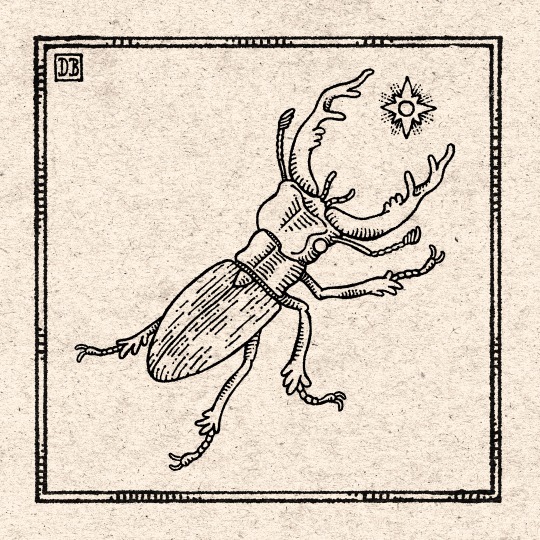
The European Stag Beetle
The stag beetle (Lucanus cervus) is the subject of quite a bit of European folklore. In Germany is was believed that these insects would carry burning coals into homes to set them on fire. Some also claimed that stag beetles could attract lightning, leading to an association with the Norse god Thor. To avoid being struck by lightning, people would wear the heads of the beetles on their hats. Stag beetle heads are actually still worn frequently as an accessory in traditional Bavarian costumes.
The practice of wearing stag beetles was not exclusive to Germany either. In his Naturalis Historia (Natural History), published in AD 77, Roman historian Pliny the Elder writes about a custom in which stag beetles would be worn as amulets around the necks of infants. This was apparently done to protect them from disease.
Stag beetles were also often associated with the devil and therefore seen as especially malevolent creatures. In England these “Devil’s Imps” were believed to be sent to destroy crop fields. As a consequence, they were often killed by people who found them. This association also seems to have spread to Germany as evidenced by the term “Teufelspferd” (Devil’s Horse), sometimes used to refer to these insects.
If you would like to learn more I will leave my sources below!
Sources:
https://core.ac.uk/download/pdf/33521313.pdf
https://www.gutenberg.org/files/41625/41625-h/41625-h.htm
http://maria.fremlin.de/stagbeetles/nframe.html
https://www.perseus.tufts.edu/hopper/text?doc=Perseus%3Atext%3A1999.02.0137%3Abook%3D11%3Achapter%3D34
412 notes
·
View notes